Melting Snow for Survival Tips
Check out these melting snow for survival tips that may save your life. You’ve been trying to ration your drinking water for several days now, but in the next day or two, your family will be left without the water you need to hydrate, cook, clean clothes, and perform personal hygiene chores. Yikes! After reading about the challenges in Buffalo, NY last week where some areas got over 77 inches of snow, I wanted to update this post and share my ideas.
This can be an alarming situation because you and your family can only last for a few days without water. Melting snow in cold climates is one of the few good things about cold weather from my viewpoint as a girl who grew up in Las Vegas. Our challenge was the extreme heat of summer. Whew!!
Yet, if this situation takes place in the wintertime, it’s not as bad as it seems. Survivalists will tell you that snow can be used as your go-to liquid drinking beverage when your water supply has run out.
A bunch of snow could literally save your life. The frozen form of snow is about to become something that helps your survival chances and it can be done without having to spend a considerable amount of time.
Critical Survival Skills You Should Practice at Home
14 Items Preppers Shouldn’t Throw Away
Communication for Your Family During a Disaster
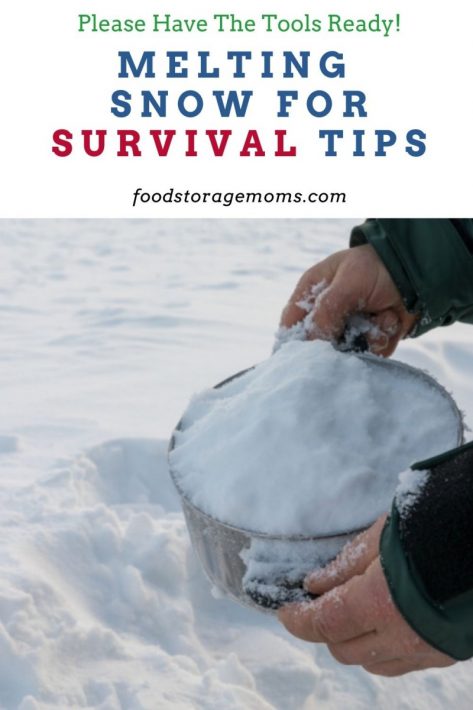
Melting Snow for Survival
Once you’ve run out of drinking water, you may have to rely on the snow around you to stay hydrated. I’d strongly encourage you not to suck or chew directly on the snow or ice that’s around you. Snow and ice can contain dirt, chemicals, environmental contaminants, animal droppings, and more. We have to consider the condition of the resulting “melt water” and how it may affect us without treatment.
Do you know a few of the best ways to melt snow so it can be used as needed? If you live in the northern states where winter climates border on arctic climates, this is a likely winter climate survival situation you need to prepare for and have some family training plans in place.
The importance of water and having safe drinking water is more vital than more people know! Here are a number of tips for melting snow, especially for survival purposes.
Boiling Snow
Boiling is probably the most effective way to melt snow, and everyone should take the time to learn this basic survival skill. This method also helps to kill the bacteria that may be present in the snow.
As long as you have a fire and a cooking pot, there’s really no reason why anyone should become dehydrated as long as there’s snow available.
Though it would be nice if you had a camping stove available, it’s not necessary. A fire pit would also do the trick.
To start out, place a small amount of snow in the pot while it’s nestled over the fire. Then begin to add more as it starts to melt, but make sure that you don’t add too much snow such that it melts over the top or causes the pot to tip over or sink into the fire itself.
You don’t want your water overflowing and going to waste. Another thing to remember is to keep the lid on your pot as your snow is boiling. That way it’s able to maintain heat and the snow will melt faster for you. I have these pans with a lid, they would work great: Farberware 4-Quart
Use Warm Heat that’s Nearby
You may think that a pillowcase is something that you should only use to cover your pillow, but it can also function as a filter too. All you need to do is fill it up with snow, or use ice, and then tie it to a low-hanging branch that’s close to your fire. Just make sure that you don’t place the pillowcase directly over your fire.
Then place a pot or large bowl below the pillowcase in order to catch the water. In as little as 30 minutes you should have up to a quart of drinking water available.
Some survivalists prefer to use a mosquito head net to help drain out the water, but be careful not to put it too close to the fire if this is what you decide to use. The head net device is made of nylon and it will melt fairly easily.
To collect snow, you can also use a black garbage bag or any plastic or cloth sack you have. Just keep in mind that plastic will hold meltwater, but you should never try to put plastic over any sort of direct heat.
All these devices can be helpful to not only help melt ice or snow, but some will act as a minor filter to catch dirt and other debris that has accumulated in the ice or snow.
Hot Water
If you happen to have a flask of hot water and an extra container with you, melting snow for drinking purposes will be easy peasy. To get started, put a handful of snow into your empty water bottle or insulated container and follow up behind it with a splash of hot water. Do this repeatedly until the container is filled to the top. In case you missed this post, How To Use A Kelly Kettle
If you feel dehydration happening, then this is probably one of the best ways to get valuable fluids into your body ASAP. A small portion of snow may not seem like a lot, but when you are showing those first signs of dehydration, snow in liquid form tastes amazing!
Rely on Solar Heat
Though this method takes a little longer than the previous two, it’s still quite effective. Even if it’s a cold winter day, as long as you have plenty of sunshine, it should work. Start out by filling up a trash bag with snow and then place it in a spot that’s nice and toasty with direct sunlight.
Allow it to sit there as you go about your tasks for the day and when you come back, you’ll be surprised how much drinking water you have.
Now you might be thinking that a trash bag filled with water isn’t necessarily the easiest thing to lug around, and I agree with you. If you want to try something that’s light and portable, you could also use clear sandwich baggies or larger Ziploc bags that will be much more portable.
Passive Melting
When you don’t have a campfire at your disposal, that’s okay. Relying on solar heat is already a passive method for melting snow, but there’s also another you could try. This is something that you could do when you’re out on a hike or when you’re going about other business while you’re outdoors.
Start out with a small amount of water in the bottom of your water bottle. This helps to aid the snow with the melting process more quickly. Then go ahead and add a little bit of snow, allowing it to slosh around as you’re walking.
After going a little bit further, add some more snow to your water bottle. Repeat this process until you’ve reached the desired amount of liquid in your water bottle.
Avoid Sucking on Snow and Ice
When you’re facing a critical survival situation, you certainly don’t want to find yourself sucking on snow or ice to stay hydrated, because you’re actually doing the opposite.
Doing so can actually reduce your core body temperature, which can be a very dangerous thing when you’re having to spend several cold winter nights outdoors. The cold temperature of the ice can do more damage than good in an already cold situation, so make sure to follow these tips!
Hypothermia is the last thing that you need to be dealing with during an emergency situation. Believe it or not, sucking on snow and ice can also have a dehydrating effect on your body.
This is why you should always boil or melt snow beforehand. Yes, the risk of frostbite is also prevalent if you find yourself in really cold weather, so make sure you take proper steps to avoid that condition. It’s amazing what your own body heat can generate, but if you add clothing layers you are so much better off. Each piece of clothing adds another layer of protection when you join outside activities. Be careful when performing any strenuous activity like shoveling snow or trying to get your car out of a drifted snowbank.
Is melted snow drinkable?
Yes, the melted snow can be drinkable as long as it has been treated with filtration and purification steps. Snow can contain a lot of impurities that can make you sick if not filtered out properly. Therefore, it is important to treat the water through different methods such as boiling, using a chemical treatment like halazone tablets, or unscented bleach before drinking it.
I have mentioned in other posts some products that can assist in the filtering process. Big Berkey water filtering products come in all sizes and have proven results in all sorts of environments. Whether it’s to filter melted ice or snow, or just filtering out surface water that might be available, their products are great.
Another product I’ve written about is from PortaWell. Rather than using a gravity-fed system like Big Berkey, the PortaWell filtering system uses a battery-powered unit that can generate up to 60 gallons of filtered water every hour. Their filters come in a variety of ways to filter the water of different quality levels.
Is boiled melted snow safe to drink?
There is no definitive answer to this question. Some people believe that boiled melted snow is safe to drink, as the boiling process will kill any harmful bacteria or contaminants in the water.
However, others argue that it is better to be cautious and filter out any impurities before drinking the water, even if it has been boiled. A little water is way better than no water at all, but treating the water and filtering it as discussed above adds levels of comfort and confidence as you do your best to protect your family.
If you have any family members with open wounds, before you try to clean them out with the water you’ve obtained from melting, be sure it has been treated so you don’t introduce bacteria into those wounds. You want all your family members to be survivors, no matter what specific challenges they face.
What is a good survival strategy if you are stranded in snow?
There is no one definitive survival strategy, as different people may have different needs and preferences. However, some general tips include carrying extra food and water supplies, building shelter to keep warm, and monitoring weather conditions. As mentioned, extra clothing is important, besides having a way to communicate. Checkout my archives listed below for more in-depth ideas.
We need to stay alert and prepared for any possible dangers or emergencies and be familiar with basic first aid techniques.
Additionally, it may also be helpful to learn some basic wilderness survival skills, such as how to build a fire or find safe drinking water in the wilderness.
More Cold Weather Tips:
- How To Be Prepared For Extreme Cold Weather
- 17 Preparedness Facts That Will Make You Think Twice
- How To Heat Your Home In An Emergency
Final Word
As you’re gathering your snow to melt for your drinking purposes, be sure that you’re collecting as clean and fresh snow supplies as possible. You don’t want to be using snow that’s stained or discolored, for obvious reasons.
For some of these melting tips that you can use out in the wilderness, it will require you to be a bit more patient because it may take a while, but as long as there’s snow, you should be able to work through it. Let me know if you have other ideas we can share with my readers.
These tips are shared with you to help you have the best chances of survival by finding adequate water, even in the snow. The cold months of winter do have something to offer for preparedness training and experiences! May God Bless this world, Linda.
Copyright Images: Man with a pot of snow Deposit photos_315318826_s-2019

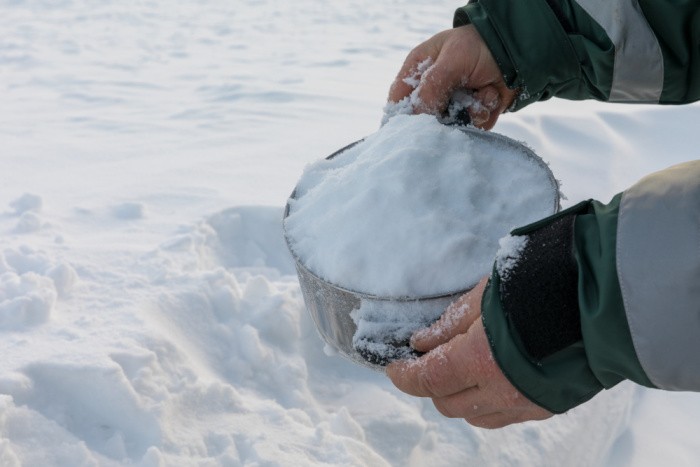


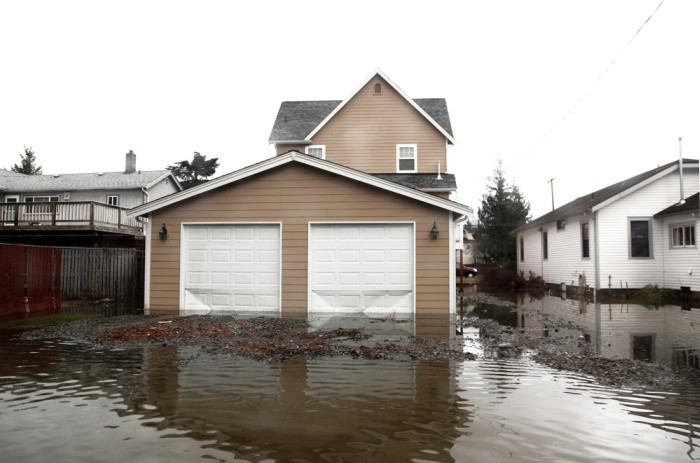
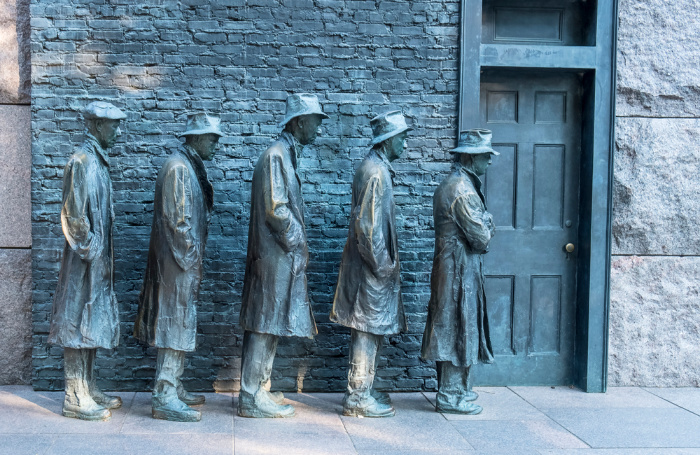

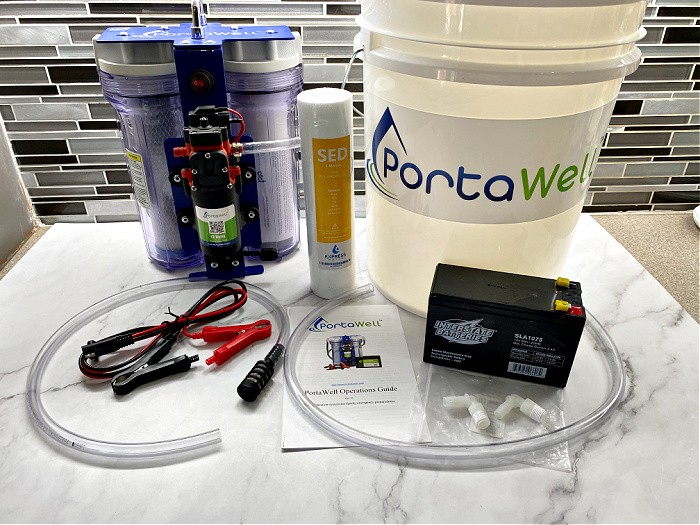
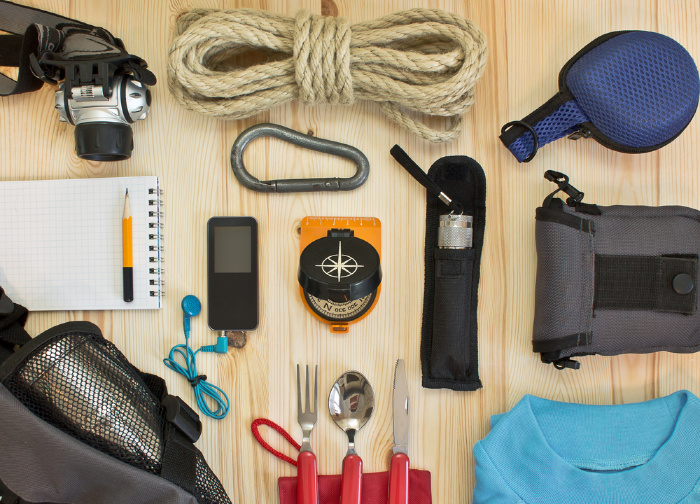













Linda, another great post. We rarely get snow, and even more rare that we get enough to melt. We do have a lake near-by, and I would filter the water and boil for at least 5 minutes.
Hi Deborah, thank you!! You are so lucky to have a lake nearby. I love it! Linda
Hi Linda. We don’t live on the lake, but within walking distance. We also have motorized adult trikes, so we can haul water on them. At our age and health conditions, e can’t manually haul heavy items. We had to get our son to replace the 5-gallon bottle on our water cooler. The 5 gallon bottles weigh about 40 pounds.
Plus the water table is real close to the surface in the back of our property. I love that. I’d love to have a well, but don’t have one yet and don’t see it happening in my lifetime.
Be aware that the longer you boil water, the more concentrated the metals that are naturally occurring in the water get. Some of those metals are not good for us.
Hi Leanne, thanks for the reminder! Linda
Great article.
In the years I and my children, lived in a mobile home in the wild’s of Alaska, I learned some things about survival. We were in survival mode most of the time there as we didn’t have much money, no running water and no indoor plumbing.
We would melt snow in a 1/2 metal barrel on top of the wood heating stove. We would bring in it in 5 gallon bucket’s and dump them straight into the barrel. Worked great.
I discovered though that each snow crystal forms around a grain is sand or dirt in the atmosphere and it would be left in the bottom of the barrel, as the snow melted. We would have to dump out the “sand” about once a week because it would accumulate to the point that I couldn’t tolerate it.
The heat from the stove would sterilize the snow and we would have a supply of drinking water until we could go get water.
Hi Mae, wow, you know how to survive for sure! The stories you could tell about surviving in the wilds of Alaska!! That 5-gallon bucket of snow would have been heavy!! The snow crystals were an interesting thing I hadn’t thought about. Great comment, Linda
Back in my Yukon years there was always a canning pot of melting snow on the wood stove. It’s amazing how no matter how well you pack it down the amount of water relative to the amount of snow was so small. The kids liked packing snow in buckets kept on the porch so it was easy to keep adding more snow. We had no well so snow melt water was mostly used for everything except drinking and it was a lot easier than going down to the lake for water since that required keeping a hole chopped open. Also uphill all the way home with the toboggan load of water.
Just to add that winters were longer in those days but lest people get the wrong idea, the snowpot only operated during the season, not all year long!
Hi Alice, oh my gosh, I love hearing this!! The toboggan load of water going uphill, oh, that’s brutal! Just think of the skills your family learned! Linda
Linda, it’s only snowed 4 times in the past 8 years at our place. A bit more than a week ago we got 5 inches. Anyhow, if you have a sun oven that would be another way to melt and even pasteurize snow for drinking or cooking water.
Hi Ray, oh my gosh, 5 inches!! That’s a lot of snow, especially for your neighborhood!! Oh my gosh! Oh, yeah, I should have put the SunOven in the post, great reminder. I wish everyone who had sunshine had a SunOven. I love mine. Great comment, Linda
Linda, tonight we had shrimp stir fry made with onions, garlic, bok choi, snow peas and baby carrots from our garden. I added mung bean sprouts from my sprouting set up. I also added canned water chestnuts.
I stored our mature Yellow Granex onions in the ground, since the ground doesn’t freeze here (they were planted last spring). I pull one anytime I need one. The Purple Queen Garlic is from a planting done late last summer and it also is still in the ground. It won’t really be mature until April or May but the small bulb I harvested for the stir fry had excellent flavor. The Bok Choi, Snow Peas and carrots were all planted last fall and are mature now. The Bok Choi has bolted but the smaller leaves are still very good–not bitter like so many veggies get after bolting. The eggs for the stir fry came from our chickens. So, except for the shrimp, coconut oil, sesame seed oil and soy sauce, it all came from our homestead. On, I could have thrown in some broccoli (whichis interplanted with the garlic and onions, but my wife doesn’t like it (except in broccoli cheese soup).
Life is good, sometimes just better than at other times.
Hi Ray, you have a little piece of heaven where you live in my opinion! Whenever you can eat almost 95% of your meals from your yard give or take, You hit the jackpot! Life tastes better when you produce the food! I love your comment! Linda
We rarely get snow where I live so I would have to rely on rain water for staying hydrated during the winter. I would still filter the rain water and bring it to a boil though.
One thing I would caution people is to not “over” boil the water, whether from snow melt or rain water, lake water, etc. When you boil water, you can concentrate all of the things you do not want to drink. All you have to do to test this out is to bring water to a boil and leave it boiling – as the water evaporates, you will see rings around your pan – those are concentrated metals and other things we don’t want.
I saw this on a post:
The time that it would take for the water to reach a boil and cool down is enough time to kill all the dangerous organisms that might make you sick. To be safe, you should follow the recommendation of the experts, which is boiling water for one full minute or three minutes if you’re 2000 meters above ground level.
(www.)outdoorfederation.com/boiling-water-safe-to-drink(.com)
Hi Leanne, I will have to hope for rainwater as well. No snow here, we did have 2-inches a couple of weeks ago. It melted within hours. I have to hope people will buy filters or have fuel to boil the water they gather. Great comment, Linda
HEH!!!! I don’t think here in central Texas we could make it if we wait until there is snow to melt. LOL!!!
Hi Harry, you only had one year with snow, right??? LOL! It was brutal! Linda
Linda,
I used to melt snow for drinking water and to cook with back in the distant past when I was backpacking or winter mountaineering. You don’t really need to boil it to sterilize it. Merely pasteurizing it (165F for a minute or two) is adequate. A WAPI (water pasteurization indicator) device is cheap and reuseable and will tell you when your snow/water is safe to drink.
re: bolting bok choi. The small yellow flowers and stems are perfectly edible and add a bit of color to salads or stir fry dishes.
I recently expanded my sprouting operation. Now I sprout alfalfa, broccoli, clover, radish, fenugreek, mung beans, peas, and garbanzoes as a matter of course. These sprouts end up in salads, stir fry dishes and on Turkey, Roast Beef or even Spam sandwiches. I also sprout other things on occasion.
Big difference in them wet heavy snows as opposed to that dry powder in what it takes to get that pot of water.
Sure could use some of it to help with the drought conditions round here.
Hi Matt, I know the skiers are loving the snow powder right now, but you are right we need the wet heavy snow like Utah received a couple of days ago. There is so much drought everywhere, it’s scary. Linda
………Just avoid the yellow snow!!!!…….;)
HI Chris, oh yeah, don’t scoop the yellow snow!! LOL! Linda